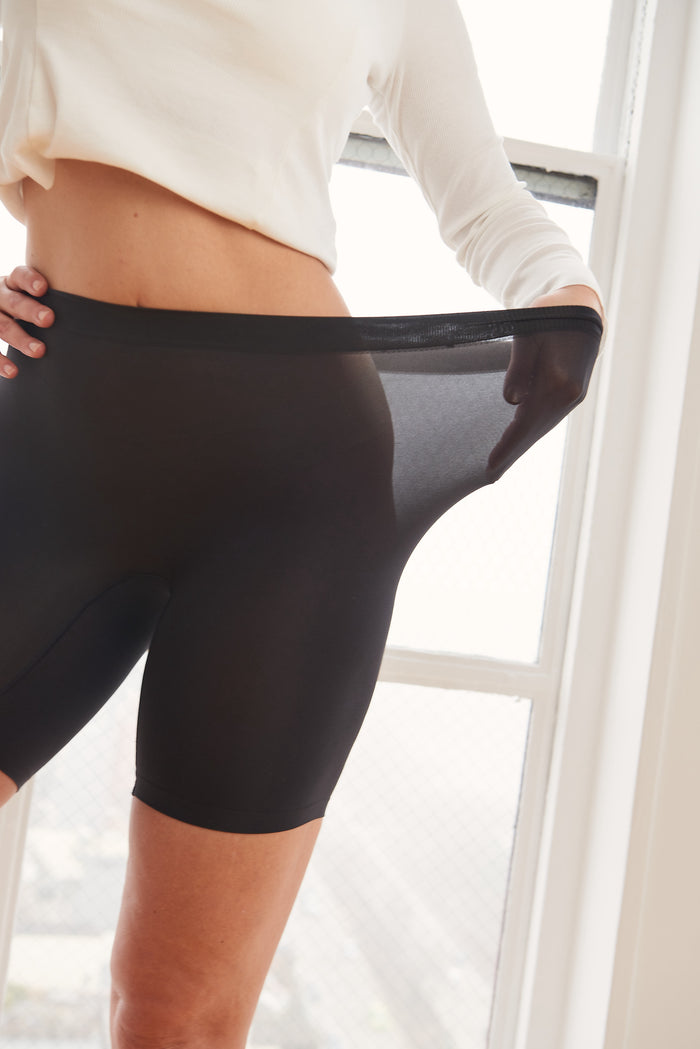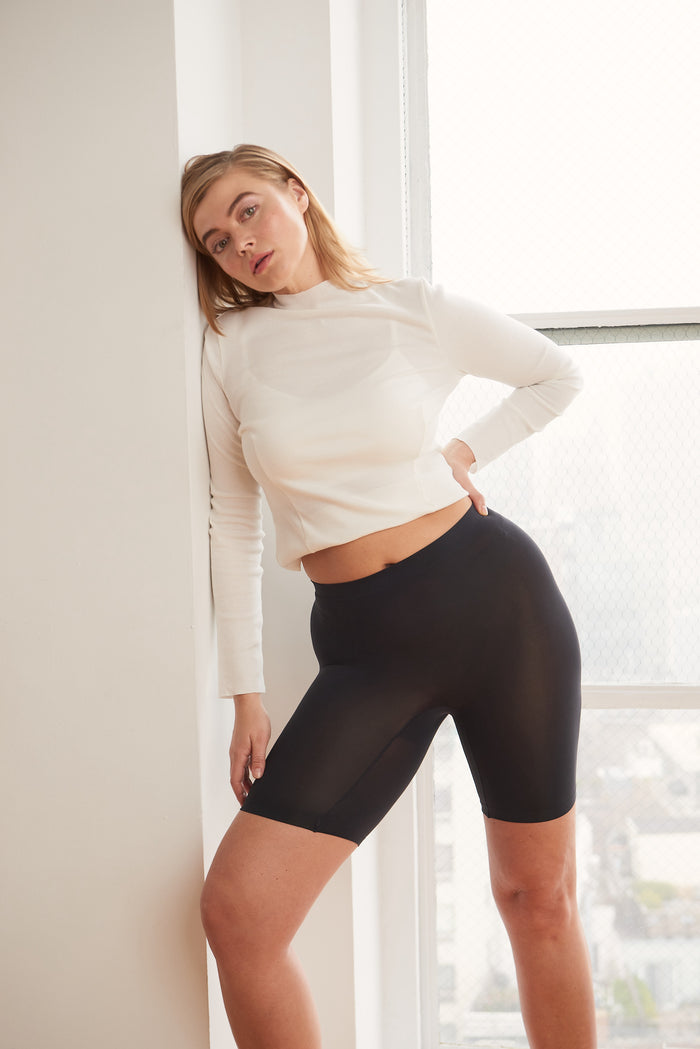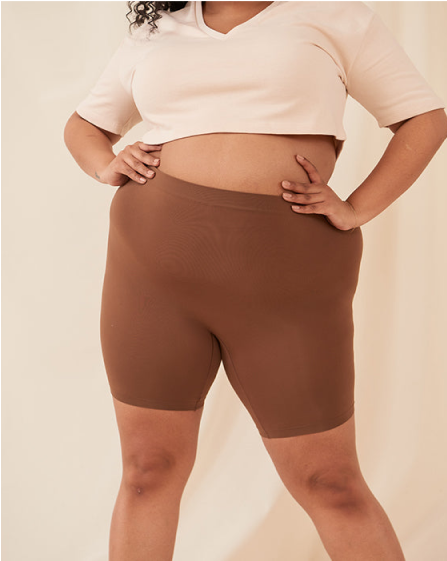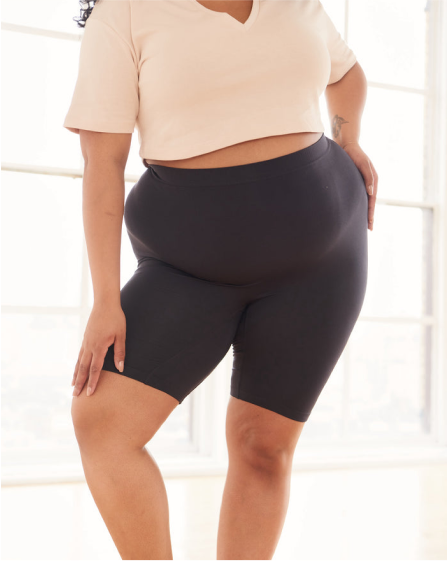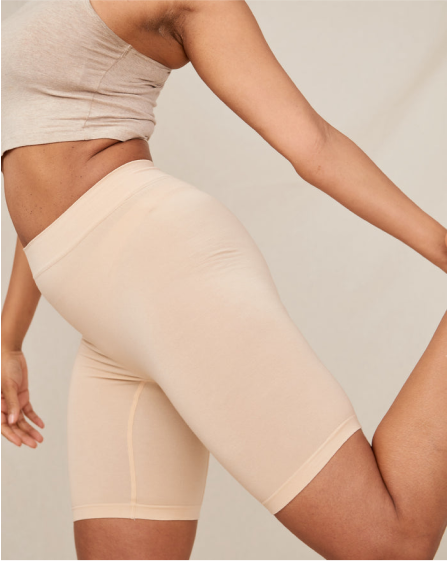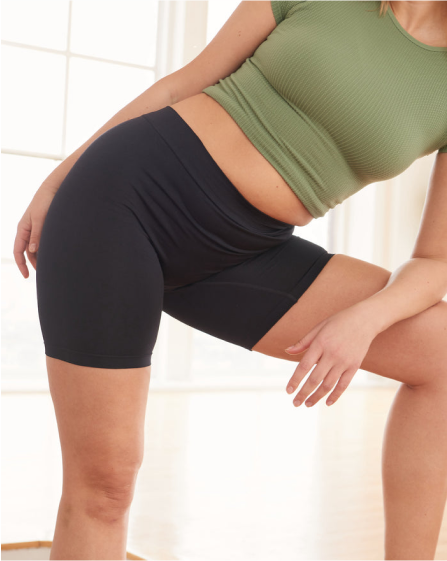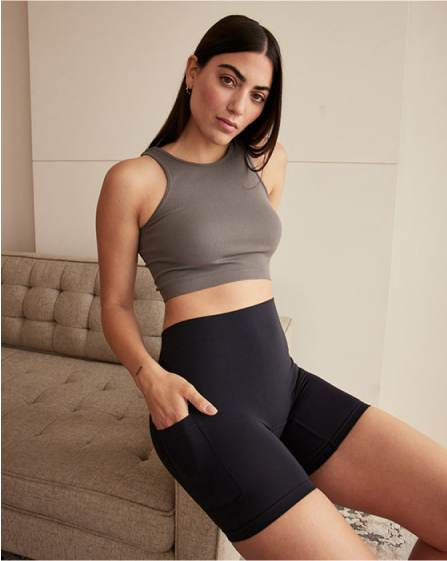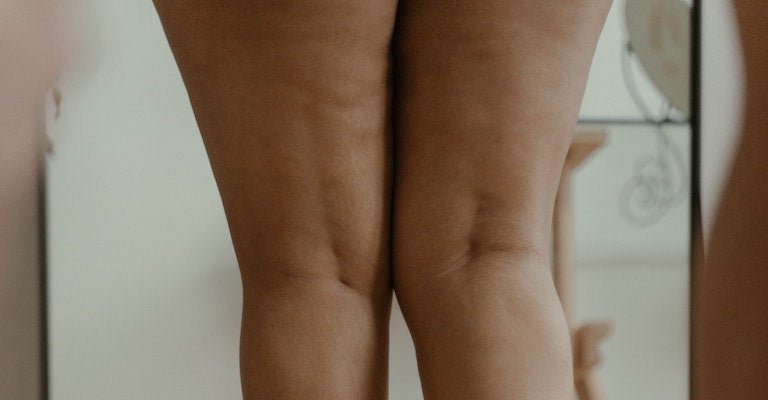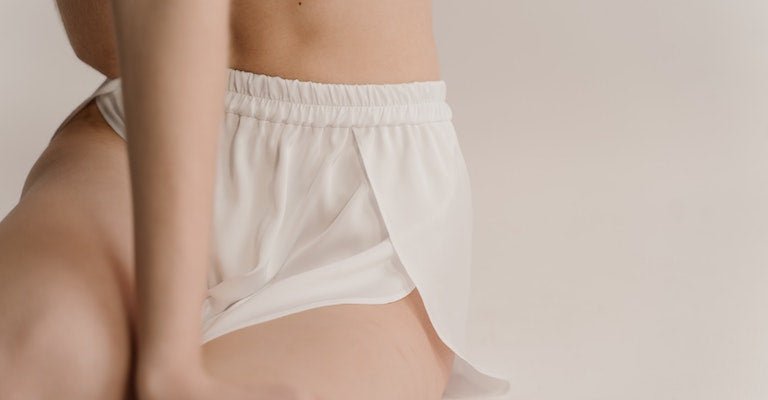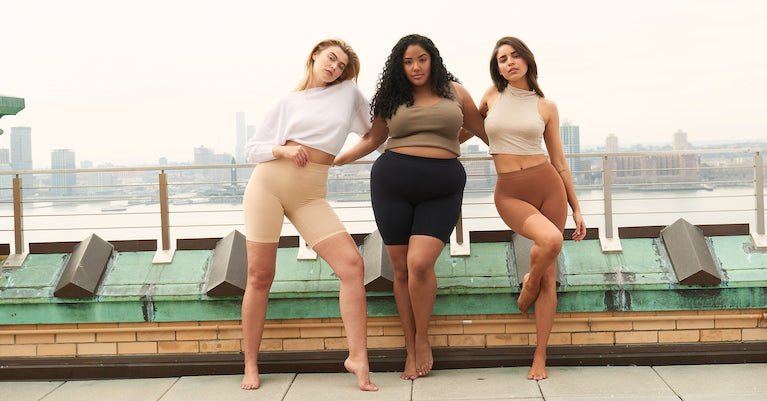Table of Content
Table of Content
When skin chafing happens, it can lead to a rash or, even worse, itchy, painful hives. At first glance, the two skin conditions can seem similar as they both can be caused by irritated skin, but there are some distinct differences between the two. In an ideal world we’d be able to prevent all forms of red, chafed or raised skin — that’s why we developed shorts that create a soft fabric barrier between our thighs to avoid both. We’re the original anti-chafing shorts brand with a goal of protecting your thighs from any form of discomfort.
Don’t want to deal with hives or rashes this summer? Let’s dive into what differentiates hives vs rash and what causes them, along with some tips to help calm your skin in a pinch.
What are hives?
The medical name for hives is urticaria. They’re raised bumps or red welts that can appear suddenly on your skin, often because of skin irritation (like chafing or heat) or an allergic reaction. They can vary in size from small dots to larger patches, and you’ll typically notice them when you suddenly have an itchy sensation on your body.
What causes hives?
Hives are typically your body’s immune response to certain triggers. These can include allergic reactions to foods, insect bites or pollen, to name a few. Your body could also be reacting to medications like antibiotics (penicillin is a common one) or pain relievers. Environmental factors, like extreme temperatures and sunlight, can also lead to hives. Lastly, hives can also be caused by friction when your skin rubs against itself (a symptom of chafing) or when you wear clothing that’s very tight and irritating against your skin.
A distinguishing feature of hives is that they’re typically temporary in nature; they can appear suddenly and stay for a few hours or, at most, a few days. If your hives persist for long periods of time, you may want to see a doctor or allergist. If you’re having an allergic reaction that is affecting your breathing, you should seek medical attention immediately.
What is a rash?
A rash is an all-encompassing term for when your skin changes noticeably in color, texture or appearance. Rashes can take on a variety of forms ranging from bumps and redness to blisters or scales, and they’re often associated with irritation, itching and sometimes pain. Rashes generally develop over time and can persist for days, weeks and sometimes months. If you’re ever concerned about a rash on your body, we encourage you to seek medical attention right away.
What causes a rash?
Rashes can be caused by a variety of triggers and these can be indicative of a chronic skin condition. Some of those include contact dermatitis when your skin is exposed to irritants like cosmetics or harsh chemicals. Rashes also occur when you have skin conditions like eczema or psoriasis. These will require ongoing management and you should see a dermatologist for an exact diagnosis and treatment.
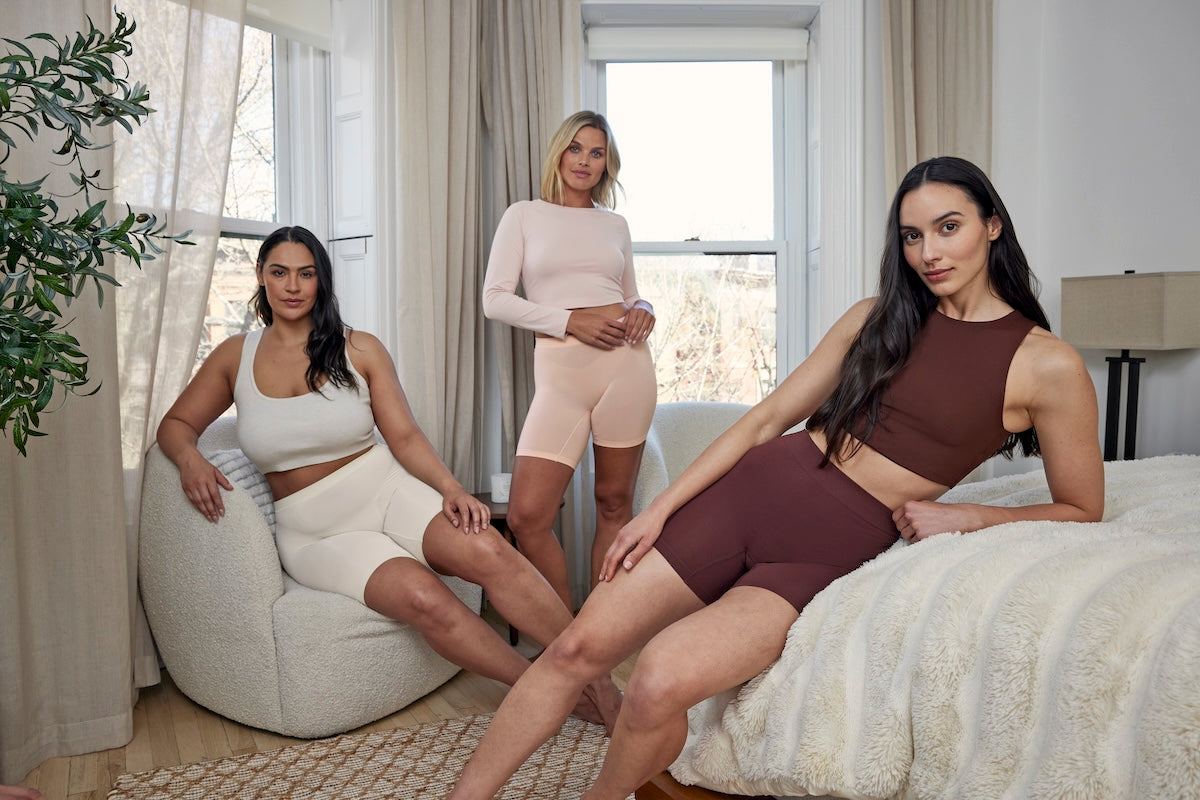
Treatment and Management
1. Anti-Chafing Shorts
If hives or a rash form on your legs, groin or butt from your skin chafing, you’ll want to make sure to stop irritation by wearing something comfortable that’ll keep your skin from rubbing together. Chafing and irritation can happen any time of year, but they’re more likely to occur in the summer as we sweat more and our skin is exposed, like when wearing skirts or dresses. Our Cooling shorts were made especially to protect your skin in the sweatiest of weather, thanks to breathable, high-performance fabric that stops your skin from rubbing together and allows sweat to evaporate into the air. They’re even proven to lower your body temperature by up to 1 degree.
If you already have hives or a rash, you’ll want to protect your skin at night by protecting your legs from rubbing together and allowing the irritated area to breathe. Our Cotton shorts are cottony soft and let your skin rest even when you’re experiencing redness and inflammation. They don’t roll or pinch your skin, allowing you to get a great night’s rest. If you find yourself needing protection during the day, our Staple shorts are a great option to prevent your skin from further irritation. Wear any of our shorties to protect your skin before irritation happens.
2. Cooling the Area
Hives and rashes can feel itchy and have a burning sensation, so keeping the area cool and dry is an easy at-home treatment option. Cool the area with a soft, damp towel after running some cold water on it to relieve your skin, but make sure to thoroughly dry the area (no rubbing!) so it can heal properly.
3. Topical Creams
Moisturizers and topical creams also help calm your skin, especially when they pack natural, skin-soothing ingredients like aloe vera, chamomile or calendula. If you have a persistent rash or possibly a skin condition, you may want to opt for medical ointments to help your skin heal. Consult with a dermatologist to ensure you’re using the correct treatment.
Hives and rashes share some similarities; in both cases the skin is irritated and looks red or textured in appearance. Hives typically go away faster than rashes but, in both scenarios, you'll want to calm your skin and help it heal. And remember: If you’re at all concerned about your skin, seek medical attention rather than trying to care for it yourself.
@thighsociety Inner thigh chafing is SO common. Here are some tips on how to heal chafed skin (and what to do to prevent it!) 💕🫶🏻 #chafing #chafingthighs #skintok #dermatology #chafingrelief #chafingproblems #burn #ouch #painful #thighchafe #chafe #skincondition #thighchaffing #greenscreen ♬ FEEL THE GROOVE - Queens Road, Fabian Graetz

